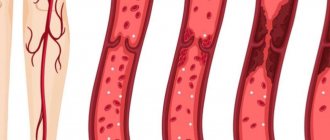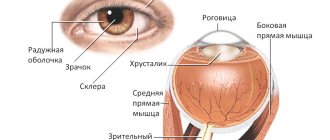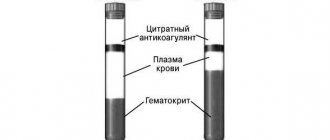Neck pain
Arthritis
26696 09 June
IMPORTANT!
The information in this section cannot be used for self-diagnosis and self-treatment.
In case of pain or other exacerbation of the disease, diagnostic tests should be prescribed only by the attending physician. To make a diagnosis and properly prescribe treatment, you should contact your doctor. Neck pain - causes of occurrence, what diseases it occurs with, diagnosis and treatment methods.
Almost two thirds of people have experienced neck pain – cervicalgia – at least once in their lives. Such pain does not always indicate a serious illness. But if relapses occur more and more often, this may be a warning sign.
Types of pain
Conventionally, the causes of cervicalgia are divided into two groups:
- arising as a result of spinal diseases (herniated intervertebral discs, arthrosis, dysfunction of intervertebral joints) and vertebral subluxation (whiplash injury). The effects of such injuries can last a lifetime;
- arising due to other reasons: infectious and endocrine diseases, tumor processes, rheumatism.
Possible reasons
Myofascial syndrome
Prolonged strain of the neck muscles, sprains, and hypothermia lead to pain that is of moderate intensity and short duration. In this case, there is often a restriction in head mobility and spasm of the neck muscles, in which tightness and pain when pressed are felt.
As a rule, pain with myofascial syndrome goes away on its own within a few days.
Osteochondrosis of the cervical spine
Osteochondrosis is a degenerative-dystrophic lesion of the spine that occurs as a result of deformation and destruction of the intervertebral discs. Loss of elasticity, compression and destruction of discs lead to overload of intervertebral (facet) joints, arthrosis, pinched nerve roots and pain. With age, due to drying of cartilage, the distance between the vertebrae decreases, which causes damage to the intervertebral joints and ligaments.
Facet joint dysfunction
Damage to the structure of the intervertebral, or facet, joints is one of the most common causes of pain in the neck.
The thinning of cartilage on the articular surfaces leads to the appearance of bone growths - osteophytes. They narrow the lumen of the intervertebral foramina and compress the nerve endings. As a rule, this causes a dull pain (gradually increasing, of low intensity), especially in the morning after sleeping in an uncomfortable position (on a high pillow, lying on the stomach). When moving it increases, and at rest it weakens. The pain may radiate to the back of the head, ear, temple or shoulder.
Hernias and protrusions of intervertebral discs
Compression of intervertebral discs that have lost their elasticity leads to their protrusion (protrusion) into the spinal canal and the subsequent formation of a hernia.
As a result, compression of the spinal cord occurs, leading to impaired sensitivity of the hands (numbness, burning, weakness) and pain. Shooting (irregular one-sided) pain intensifies when tilting, rotating or throwing back the head, so that the person instinctively tilts the head forward and to the side opposite to the localization of the pain.
Cervical myelopathy
Prolonged compression of the spinal cord herniation leads to disruption of the spinal circulation.
Painful sensations arise not only in the neck, but also radiate between the shoulder blades and into the shoulders. They intensify with movement and do not stop even after taking painkillers. Characteristic signs include the appearance of goosebumps, numbness in the limbs, and problems with fine motor skills. Dizziness, memory impairment, and gait changes are possible.
Whiplash
A whiplash injury to the cervical spine occurs in a person when the neck is sharply bent forward or backward with subsequent kickback in the opposite direction. This type of damage most often occurs during an accident. This causes stretching and damage to muscles, ligaments, intervertebral discs and cervical vertebrae. In the most severe cases, dislocations and fractures of the cervical vertebrae occur.
The consequences of injury can be pain in the cervical region and shoulders, migraines, spasms of the neck muscles, and impaired mobility.
Associated symptoms include blurred vision, fatigue, and headaches.
Neck pain due to muscular-tonic syndromes
Muscular-tonic syndrome is a condition that is caused by prolonged spasm of several muscle groups in the head, neck and chest. Compression of the neurovascular bundles leads to nagging, sometimes severe pain. In particular, scalene muscle syndrome is a symptom complex in which the innervation and blood supply to the scalene muscles of the neck, running from the cervical vertebrae to the first and second ribs, are disrupted. This syndrome is characterized by pain and stiffness in the neck, more often in the morning, and a certain position of the head (the head is tilted forward and slightly towards the tense muscle). The pain can be mild, aching, but sometimes sharp, intensifying at night, with a deep breath, or when tilting the head to the healthy side. Sometimes pain is transmitted to the shoulders, to the axillary and interscapular areas, to the anterior parts of the chest.
Neck pain due to other causes
Constant and prolonged neck pain can be caused not only by diseases of the spine.
First of all, infectious diseases should be excluded, in particular, nonspecific or tuberculous spondylitis, epidural abscess. Persistent pain that increases rather than decreases with rest may be a sign of metastatic damage to the vertebrae. These symptoms are accompanied by increased body temperature, general weakness, and sweating. When pressing on the spinous processes, local pain occurs.
Damage to the spine is also possible with rheumatoid arthritis. As a rule, at an early stage of the disease, pain occurs in the neck, back of the head and head. The pain can radiate to the forehead and eye sockets, and intensifies when bending and turning the head. Sensation in the neck and arms is lost.
Diagnostics and examinations
First of all, the doctor pays attention to clinical symptoms: localization and distribution of pain, impaired sensitivity in the neck, shoulders, arms, decreased reflexes, general condition, nature of the pain (increases with movement or at rest).
The doctor may prescribe:
- general blood analysis
No. 5Clinical blood test
Blood analysis. General blood test (without leukocyte formula and ESR) (Complete Blood Count, CBC) A general blood test is a comprehensive study, during which a quantitative assessment of the content of blood cells (erythrocytes, leukocytes, platelets), hemoglobin is carried out, hematocrit and red blood cells are calculated indexes (MCV, MCH, MCHC, RDW).
Up to 1 business day
330 RUR Add to cart
- blood chemistry
No. OBS74Biochemistry of blood
Blood biochemistry: minimal profile A screening biochemical examination that helps make an initial assessment of health status and determine the course of further examination. For use as part of a clinical examination and as prescribed by a doctor.
Up to 1 business day
RUB 3,840 Add to cart
- general urine analysis
No. 116Clinical urine analysis
General urine analysis (Urine analysis with sediment microscopy) General urine analysis is a comprehensive assessment of a number of physical and chemical parameters of urine, as well as elements of urinary sediment, aimed at identifying pathologies of the kidneys and urinary tract.
Up to 1 business day
RUB 370 Add to cart
- blood test for C-reactive protein
No. 43Markers of inflammation
C-reactive protein (CRP) The study of CRP in blood serum is used to detect inflammation and monitor the treatment of inflammatory diseases.
Up to 1 business day
570 RUR Add to cart
To clarify the diagnosis, the doctor will need the results of computed tomography and magnetic resonance imaging
Diagnostics
When the first symptoms appear, you can contact a therapist, who will refer you to a neurologist or vertebrologist.
The doctor will take a medical history, conduct a visual examination and tests, and then send the patient for tests, including:
- functional x-ray diagnostics in different head positions;
- computed and magnetic resonance imaging;
- Ultrasound of neck vessels;
- angiography.
Based on the results, you can identify the cause of the pinching and the severity of the problem. This information will allow you to choose the most accurate treatment.
Introduction
Cancer begins when healthy cells change and begin to grow uncontrollably, forming a mass called a tumor. A tumor can be cancerous or benign. A cancerous tumor is malignant, meaning it can grow and spread to other parts of the body. A benign tumor may grow but not spread to other tissues.
Head and neck cancer
Head and neck cancer is a term used to describe a number of different cancers that develop in or in the throat, larynx, nose, sinuses and mouth.
Most head and neck cancers are squamous cell carcinomas. This type of cancer begins in epithelial cells, which make up a thin layer of surface tissue. Just below the epithelium, in some areas of the head and neck, there is a layer of moist tissue called mucosa. If cancer is found only in the squamous cell layer, it is called carcinoma in situ. If the cancer has grown beyond this cell layer and into deeper tissue, it is called invasive squamous cell carcinoma.
When head and neck cancer begins in the salivary glands, the tumor is usually classified as adenocarcinoma, adenoid cystic carcinoma, or mucoepidermoid carcinoma.
Types of head and neck cancer
There are 5 main types of head and neck cancer, each named according to the part of the body where it is found.
- Laryngeal cancer and hypopharyngeal cancer. The larynx is an integral part of the vocal apparatus. This tubular organ in the neck is used for breathing, speaking and swallowing. It is located at the top of the windpipe, or trachea. The hypopharynx (esophagus) is the lower part of the throat, surrounded by the larynx.
- Cancer of the nasal cavity and paranasal sinuses . The nasal cavity is the space behind the nose where air enters the throat. The paranasal sinuses are the air-filled areas surrounding the nasal cavity.
- Nasopharyngeal cancer. The nasopharynx is the air cavity at the top of the throat behind the nose.
- Cancer of the oral cavity and oropharynx . The oral cavity includes the mouth and tongue. The oropharynx includes the middle of the throat, from the tonsils to the tip of the voice box.
- Salivary gland cancer . The salivary gland produces saliva. Saliva is a fluid that is secreted in the mouth to maintain moisture and contains enzymes that break down food.
Other types of cancer can also be localized in the head and neck area, but their diagnosis and treatment are very different.
Prevention
Preventing pinched vessels of the cervical spine is much easier than treating it. To do this, it is enough to follow the rules of a healthy lifestyle:
- regularly receive moderate physical activity;
- avoid carrying heavy objects, and if necessary, distribute the load evenly in both hands;
- sleep on an orthopedic mattress and pillow;
- avoid stress and learn to cope with it correctly;
- sleep at least 7 hours a day.
With a sedentary lifestyle, you need to accustom yourself to do light exercises. This is relevant for office workers and transport drivers. It is very useful for them to wear a Shants collar for a few minutes a day to relieve stress on the cervical vertebrae.
Pinched blood vessels in the cervical spine are a common and unpleasant situation that can be avoided. And if necessary, quickly cure using modern medicine methods.
Stages
Staging is a determination of where the cancer is located, whether and where it has spread, and its effect on other parts of the body.
Doctors use diagnostic tests to determine the stage of cancer; they may need information based on tissue samples obtained at surgery, so staging may continue until all tests are completed. Information about the stage helps the doctor determine which treatment is optimal and predict the possibility of recovery.
TNM tumor classification system
One way to determine the stage of cancer is the TNM system. Doctors use the results of diagnostic tests and scans to answer questions such as:
- Tumor (T): its size and location?
- Lymph nodes (N): extent of spread of the process to the lymph nodes?
- Metastasis (M): Has the cancer spread to other parts of the body?
The results are combined to determine each patient's cancer stage. Stage provides a common way to describe cancer so doctors can work together to plan the best treatment.










